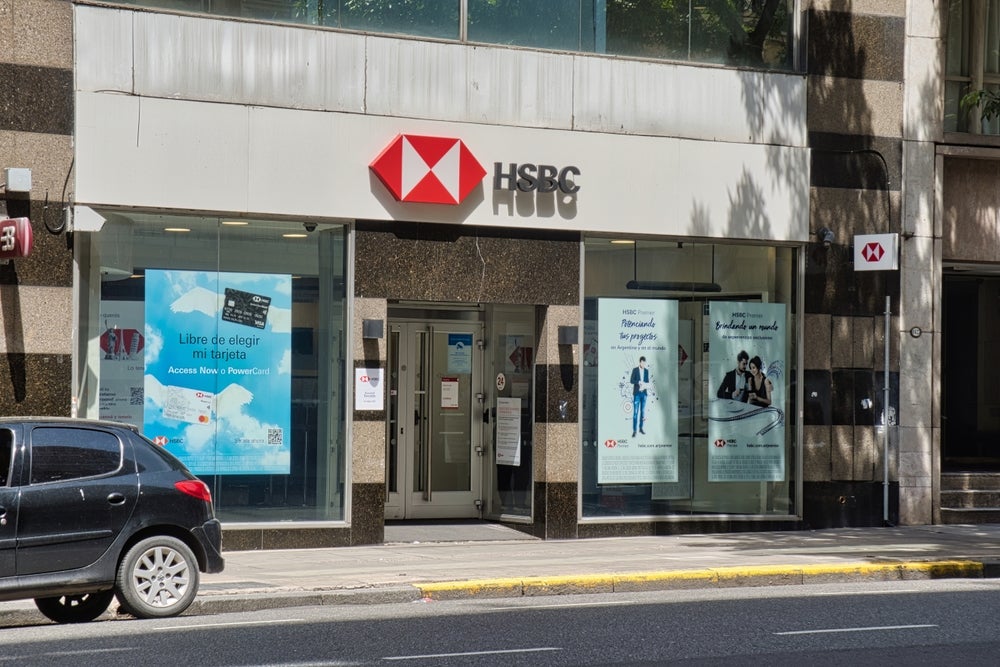Puneet Bahl, ABN AMRO’s recently appointed head of
consumer finance in Asia-Pacific, says his bank will continue to
focus on high-growth affluent segments. Profits at its Asian unit
increased significantly in the first half of 2007, driven in part
by consumer finance and credit card growth. Titien Ahmad
reports.
ABN AMRO has had its fair share of market talk over the past few
years over its buy-and-sell strategy in its Asian consumer finance
business, a strategy without, seemingly, a clear direction as to
its overall regional plan.
But the irony is that while the two competing bids for the ABN AMRO
franchise from Barclays and the Royal Bank of Scotland-led
consortium may have suspended longer term regional strategies, ABN
AMRO’s Asia-Pacific business has enjoyed an incredibly robust first
half period: profit after tax rose 157 percent, with the cost/
income ratio down to 67 percent from 74.8 percent in the first half
of 2006.
Focusing on cards and
consumer finance
Talking to RBI, Puneet Bahl, ABN AMRO’s recently appointed
head of consumer finance in Asia-Pacific, says his mandate is to
grow the bank’s regional consumer finance business, focusing on
cards and personal loans. Bahl has over 22 years experience in
consumer marketing and leadership in packaged consumer products and
financial services, with global institutions such as Standard
Chartered and Citi.
“Secured lending is not a strategic business area for ABN AMRO. We
have just sold our auto portfolio in Singapore, and mortgages in
the US. We are quite happy to exit these non-core businesses,” he
said. “Our focus is Van Gogh Preferred Banking and SME Banking,
more than general banking”.
How well do you really know your competitors?
Access the most comprehensive Company Profiles on the market, powered by GlobalData. Save hours of research. Gain competitive edge.

Thank you!
Your download email will arrive shortly
Not ready to buy yet? Download a free sample
We are confident about the unique quality of our Company Profiles. However, we want you to make the most beneficial decision for your business, so we offer a free sample that you can download by submitting the below form
By GlobalDataA focus on niche areas will help ABN AMRO circumvent its limited
distribution network – something it had missed building while its
foreign peers had added steadily branches, ATMs and sales staff
over the years. “The consumer finance business, fortunately, is not
dependent on a large branch network either for collection or sales
or servicing.”
“We entered into the market at least 15 to 20 years after the
industry started. We cannot play the game of the big boys. We
cannot take them head-on – it’s too late for that,” he said. “We
have to be smarter and more selective about where we operate. We
are constrained by limited distribution so we cannot be a mass
player.
“Segmenting the market becomes critical for us. We have to think of
clear niches. We have products that are available for all and
sundry but growth and focus will come from niche products.”
ABN AMRO’s consumer finance business is currently in Taiwan, Hong
Kong, India, the United Arab Emirates (UAE), Pakistan, Indonesia,
Singapore and, soon, China and Malaysia. The bank has been active
in Taiwan, India and the UAE for five or more years; in the likes
of Indonesia, Pakistan, Singapore and Hong Kong, it has been there
for about two years.
More targeted products
Currently, in terms of the region, India and Taiwan are the bank’s
biggest businesses in terms of number of cards while the UAE is the
largest in terms of revenue. “We’ve grown from seven to nine
markets. You will see a lot more targeted products in cards and
personal loans and in some places even replacing the vanilla
products which are getting de-emphasized,” said Bahl.
In its interim 2007 results, the Dutch group reported that profit
sourced from the Asia-Pacific region increased to €224 million,
which it described as a “significant contribution” to the group’s
profit for the period. Total operating income for its Asia-Pacific
business unit increased by 38.3 percent, or €334 million, to €1.21
billion. Consumer revenues grew by 24.8 percent, driven by its Van
Gogh Preferred Banking (VGPB) service line and its credit card
businesses. VGPB growth was particularly strong in Singapore, Hong
Kong, China and Taiwan.
The group emphasised that operating income improved due to
significant growth in the consumer finance business. In particular,
the credit card business in Indonesia and the United Arab Emirates
(UAE) and the overall consumer finance business in India showed
strong improvements.
China’s assets rose 111
percent in 2006
In China, revenue increased by 75.8 percent – VGPB revenues grew by
83.8 percent and assets under administration increased by 111
percent from last year. India also continued its strong
performance, as overall revenues grew by over 39.1 percent in the
first half of 2007.
Consumer revenues in India grew by 53.9 percent, primarily due to
continued growth in the credit card and personal loan portfolios,
complemented by aggressive growth in deposit accounts and
distribution of third-party mutual funds and insurance
products.
Total assets under administration of VGPB clients in Asia grew by
20.5 percent, while the total number of credit cards across the
Asia-Pacific region increased by 12.3 percent to 2.9 million.
“Growth rates are extremely impressive in all markets without
exception. Our growth markets might be a different mix tomorrow –
for example, China and Indonesia have massive potential to really
become large contributors to our business. The growth rates for
credit cards and personal loans – unsecured lending of any form –
have gone through the roof. India is growing exponentially.”
The exponential growth in India is not without attendant problems,
however. Competition in the Tier 1 cities of Mumbai and Delhi has
grown so intense that banks are spreading out into Tier 2 cities.
Staffing has also become a huge issue with pay rises of 50 percent
and above not uncommon.
“The Indian manager is spread fairly thin. There are opportunities
overseas and within the country and all sorts of new players are
coming in – banks, non-banks, foreign and local companies are all
going into the consumer finance space. Where do they get their
people from? There is a limited pool of talent to tap into so the
fight for talent is becoming pretty stiff. Staff attrition rates
are the highest in India compared to other markets even in this
business,” said Bahl.
“This is the cost of doing business. While it is an issue, it’s not
a show-stopper and really shows the attractiveness of the Indian
market. We just have to manage and deal with the staffing issue by
planning careers and manpower strength ahead of time and possibly
pay a little bit more attention to this area than in some other
markets.”
Banks chasing more customers
Bahl says that as banks chase customers in
high-growth markets like India, risk management policies and sound
pricing practices are also being flouted.
“The way some markets are priced today is harmful. I believe that
markets with higher interest rates will also see higher loss rates
– it’s a catch-22 situation. When you borrow $100 and have to pay
back $140 instead of say, $120, the chances of the $140 going bad
is higher,” he continued.
“The other challenge is irrational competition. Because of the high
growth of these markets, everybody is falling over themselves to
get a larger share of the pie and the industry is moving ahead of
its customers.”
This was what happened in the Taiwan credit crunch of 2005-2006,
with banks lending money to over-extended customers. Bahl feels
that the bank has “done extremely well in Taiwan” compared to other
banks that have had to pull out the market or be bought over by
stronger banks.

“We ‘bled’ the least,” he said. “Citibank and ABN have had a
virtually identical loss rate which is at least twice as good as
the market. It’s very hard to say that you’re pleased with that but
those are the facts. Fortunately, we’re coming out of the crisis as
an industry.”
“There is very little you can do with the situation that happened
in Taiwan – nothing any bank can do. If there was, there would have
been at least one shining star that would have steered clear of the
problems. This is what typically happens – when the going is good,
banks open new segments, go into high-risk areas, increase the cost
base and it is party time. When the going gets rough, all those
actions will have an effect.
“There is certainly scope for the regulators to do more, like
making use of the credit bureau mandatory. Right now it’s viewed as
just a nice thing to have by many issuers. So while we might be
very careful with who we book based on our best-in-class
underwriting processes, another 10 other banks could come in
without the same processes or discipline and give you a loan. So,
for no fault of ours, the customer becomes over-leveraged and when
he goes bust, he goes bust on all banks including the banks that
did the right thing.”

A lot more
investment
Going forward, Bahl sees “a lot more investment in building our
infrastructure especially on the risk side. We are a relatively
young business and we have decided to invest ahead of time on risk
systems, tools, processes, skills and people – possibly more than
even a business double our size would want to justify. We believe
that risk management will be the big difference between the winners
and losers of tomorrow.”
“The bank that uses the credit bureau data the best will be the
winner. It will not be the bank that gives the best gift or the
best rate. The bank that can out-underwrite the competition will
have a sustainable competitive advantage, and hopefully you will
see that coming from ABN AMRO.”







